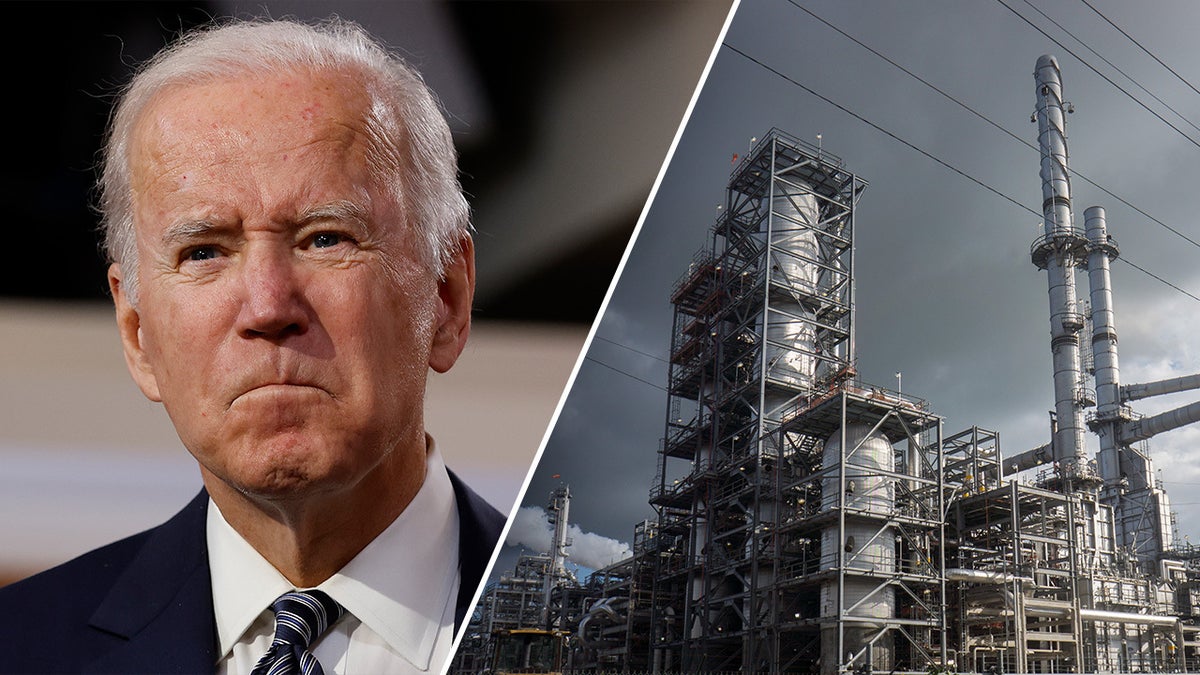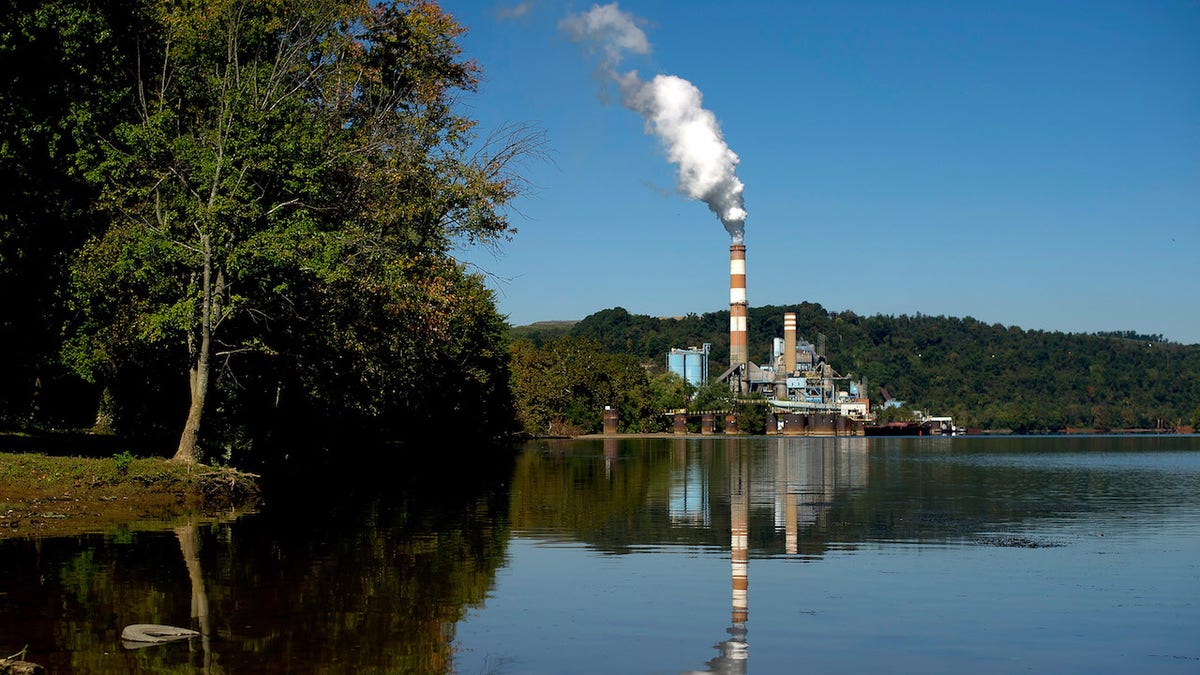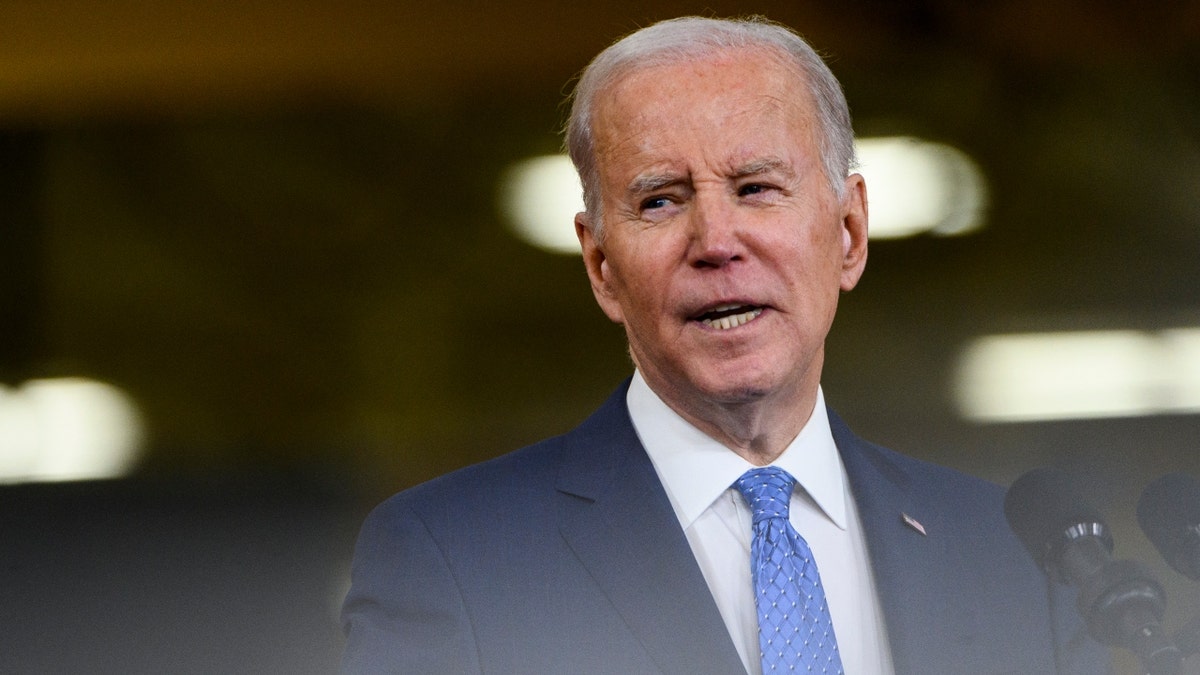Biden administration looking to cut carbon emissions from power plants
‘The Big Sunday Show’ panelists discuss AOC continuing to push the climate narrative and how the Biden administration is set to crack down on power plants.
The Biden administration's internal analysis of its proposed power plant crackdown is based on overly rosy assumptions that experts argue vastly downplay how the regulations are projected to impact power grid reliability and costs.
The Environmental Protection Agency's (EPA) regulatory impact analysis (RIA) of its power plant plan produces a "remarkable underestimation" of actual impacts, according to a report released this week by the Chamber of Commerce Global Energy Institute. The EPA created a questionable baseline scenario, failed to factor in projected electric vehicle growth and overestimated the development of carbon capture technology, the report showed.
"What we really found out with our analysis is that EPA essentially looked at the different knobs and levers on their economic analysis of this and turned every one of them in a favorable direction to minimize the costs and amplify the benefits," report co-author Heath Knakmuhs, the Global Energy Institute's vice president and policy counsel, told Fox News Digital in an interview.
"If someone were to actually provide a real straight-laced sort of no-nonsense look at this, the costs would be far more significant, thereby essentially opening this up to being a more significant rulemaking."
WHITE HOUSE ECO COUNCIL AT ODDS OVER TECHNOLOGY CENTRAL TO BIDEN'S GREEN GOALS

President Joe Biden and EPA Administrator Michael Regan at the White House earlier this year. (Drew Angerer/Getty Images)
In May, the EPA unveiled the power plant regulations targeting fossil fuel-fired power plant emissions as part of the administration's broader climate agenda. In its announcement, the agency said the plan "would avoid" 617 million metric tons of carbon pollution through 2042 via new standards forcing plants to either utilize carbon capture technology or shut down. But it added the regulations would have a "negligible cost."
However, the Global Energy Institute report Wednesday showed that, in its RIA released alongside the regulations, the EPA packed the vast majority of the plan's projected emissions reductions into a "baseline scenario." That means the agency's emissions reductions, and costs accompanying those reductions, would occur without the EPA plan, according to the RIA.
REPUBLICANS TAKE ACTION TO OVERTURN BIDEN'S POWER PLANT CRACKDOWN
"There is a massive claim of emission reductions occurring without the rule at all," Knakmuhs told Fox News Digital. "Essentially, they take the use of the Inflation Reduction Act that was signed into law last August, and they give a very rosy outlook of how that act is going to transform the electric system in all the ways that actually, in many ways, would negate the need for this rule."

(Getty Images)
For example, the RIA states that, under a baseline scenario without the EPA's proposed regulations, power sector emissions are expected to plummet 80% below 2005 levels by 2040. With the regulations, though, the agency assumes emissions will decline 81%, a meager 1% difference compared to the baseline scenario.
"Why is this important? Because the completely unrealistic baseline assumptions change the entire cost-benefit equation. When agency mandates are met even without the rule, the forecasted compliance costs on utilities and the resultant economic impacts on families and businesses effectively disappear," the Global Energy Institute report states.
The EPA's RIA projects the impacts its plan would have on consumer electricity prices based on its baseline. It concludes the regulations would increase prices 0% nationwide through 2040. Industry groups and experts have loudly rejected the notion that such emissions reductions could take place without significant cost impacts.
Further, the baseline scenario substantially deviates from projections made by the Energy Information Administration (EIA), the nonpartisan statistics office within the Department of Energy. The EIA's 2023 forecast, which factors in Inflation Reduction Act provisions, says natural gas prices will increase to $3.94 per million Btu in 2040, 97% higher than what EPA says the price will be in its baseline.

A plume of exhaust extends from the Mitchell Power Station, a coal-fired power plant southwest of Pittsburgh. (Jeff Swensen/Getty Images)
"It's reliability at the end of the day because they're essentially modeling and ignoring this huge gap between where the supply will end up under this rule and where the demand will be underneath this and other rules," said Knakmuhs.
Dan Byers, the Global Energy Institute's vice president for policy who co-authored the report, said he was concerned about the actual cost and reliability impacts of the EPA's plan but added the Biden administration may be trying to avoid legal scrutiny with its baseline projections.
JOE MANCHIN THREATENS TO OPPOSE BIDEN NOMINEES OVER UPCOMING POWER PLANT CRACKDOWN
The U.S. Supreme Court ruled in June 2022 that a similar Obama-era rule limiting power plant emissions under the Clean Air Act was unconstitutional since Congress never granted the EPA the explicit power to issue such regulations.
"If it goes to the courts and folks say, 'Look, this is a really big deal. This is a transformative rule. We're not sure about your authorities here,' EPA can say, 'It's not transformative at all. It hardly does anything,'" Byers told Fox News Digital.

Shortly after he took office, President Biden pledged to enable the nation to achieve an up to 52% total emission reduction by 2030 and to create a carbon pollution-free power sector by 2035. (Stephen Maturen/Getty Images)
"The reason we did this report is to shed some light on it and, hopefully, EPA — we're really calling on EPA to do a sensitivity analysis. Can you run the numbers using EIA forecasts of gas prices and closures and emissions?" he said. "Or at least respond and defend why it is you think that all this stuff will happen in the baseline."
CLICK HERE TO GET THE FOX NEWS APP
In addition, in their report, Byers and Knakmuhs noted the EPA neglects to factor in added electricity demand expected to be created by its own regulations, forcing increased consumer adoption of electric vehicles.
And they found the agency also relies too heavily on carbon capture technology which is being used at just one facility in the world, the Boundary Dam Power Station in Canada. Although the Chamber of Commerce has advocated for carbon capture, the report states the technology is still unproven at scale.
"EPA will closely evaluate the Chamber’s report and will consider and respond to the report along with other comments received during the public comment period for the proposed rules, which remains open until August 8, 2023," an EPA spokesperson told Fox News Digital.






